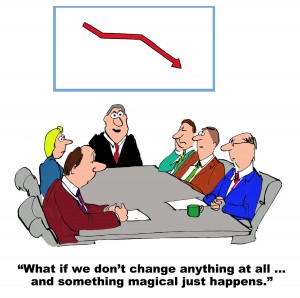
“When you’re finished changing, you’re finished.” These wise words shared by Benjamin Franklin still hold true today, especially in business. Companies invest billions of dollars each year in new technology solutions, reengineered processes and modified business models. If an organization is unable to manage change, the ROI on these endeavors can fall far short of expectations.
At the Marlyn Group, we use a four phase change management process to provide our clients a framework to manage changes big and small. This post focuses on a communications leaders can utilize that help employees move through each phase.

Aware
In this early stage, send messages aimed at building awareness by simply explaining what the intended goal of the change is and why the company wants to move in a new/different direction. Communications should cover the scope of the change, explain how the new approach will link to current processes and provide expected timelines for implementation.
Understand
In the next stage the goal is to make sure that employees understand the changes that are going to occur. At this point the employees start to connect how the new system affects their particular jobs and the jobs of others. Details should be given about what, if any, new tasks this change means for them and training support they will be given to prepare for any new responsibilities.
Accept
As time passes and questions are answered, employees reach a stage of acceptance. At this point, messages focus on items like agendas and timelines for required training. Messages should also cover some of the expected snags that employees might encounter during implementation.
Adopt
At the adoption stage, the change is in place and becomes invisible across the organization as it reaches stead state. Conversations about working out the bumps may continue in the early part of this phase. More messages should be shared about measuring the effectiveness of the new process or system and about how to address situations where it doesn’t work as planned, both short term and long term.
When your team is moving toward adoption, they may challenge you with wanting to make exceptions, or return to “legacy world”; i.e. “the way we used to do it.” These are the moments when your leadership and decision making may be put to the test. If you make an exception, or allow one employee to return to legacy world, the rest of the team may well believe that they too now have options and don’t truly have to adopt the change.
To learn more about managing change in your organization, contact The Marlyn Group at letsconnect@marlyngroupllc.com.

